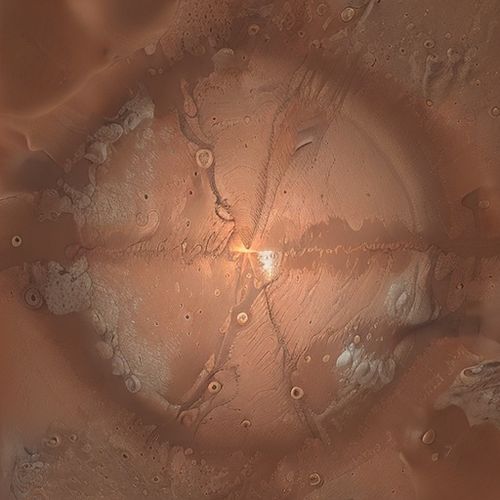Coronary Artery Bypass Grafting (CABG), also known as heart bypass surgery, has been a widely recognized and effective treatment for coronary heart disease for decades. This article reviews the current status of CABG technology, including its indications, surgical methods, materials used, and postoperative recovery considerations.
We delve into the advancements in surgical techniques, the selection of graft materials, and the importance of postoperative management in ensuring the long-term success of the procedure. Additionally, we discuss the challenges and future directions in CABG research and practice.
1. Introduction
Coronary heart disease (CHD) is a leading cause of mortality and morbidity worldwide, characterized by the narrowing or blockage of coronary arteries due to atherosclerosis. This condition can lead to myocardial ischemia, angina pectoris, and various complications, including myocardial infarction and heart failure.
Coronary Artery Bypass Grafting (CABG) is a surgical procedure aimed at improving myocardial blood supply by creating a detour around the obstructed coronary arteries. The surgery involves taking a healthy blood vessel from another part of the body and grafting it onto the coronary artery to bypass the blockage.
CABG has been a cornerstone in the treatment of CHD for decades, providing significant relief to patients with severe coronary artery disease. Over the years, advancements in surgical techniques, anesthetic management, and postoperative care have improved the safety and efficacy of CABG. This article provides a comprehensive review of the current status of CABG technology, including its indications, surgical methods, materials used, and postoperative recovery considerations.
2. Indications for CABG
CABG is indicated in patients with severe coronary artery disease who have not responded to medical treatment and have significant symptoms that affect their quality of life. The primary indications for CABG include:
- Severe Angina Pectoris: Patients with severe angina pectoris who have lost their ability to work and have not responded to medical treatment are candidates for CABG. Angina pectoris is a symptom of myocardial ischemia, which occurs when the heart muscle does not receive enough oxygen-rich blood. Severe angina can significantly impact a patient's daily activities and quality of life, making CABG a viable treatment option.
- Coronary Artery Stenosis: CABG is recommended for patients with significant stenosis (narrowing) of the coronary arteries, as determined by coronary angiography. Specifically, patients with a stenosis of more than 50% in the coronary artery main stem, or more than 75% in branch vessels, with a stenotic distal vessel diameter of more than 1.5mm and is patent, are considered for CABG. Coronary angiography is a diagnostic procedure that uses X-rays to visualize the coronary arteries and identify blockages or narrowing.
- Post-Myocardial Infarction: After a myocardial infarction (heart attack), CABG may be indicated if coronary angiography reveals significant stenosis of the coronary artery main stem. Myocardial infarction occurs when blood flow to the heart muscle is blocked, leading to tissue death. CABG can help restore blood flow and prevent further complications.
- Complications: CABG is also indicated in patients with angina pectoris complicated by left ventricular aneurysm, ventricular septal defect, or valvular damage. These complications can further impair cardiac function and increase the risk of adverse outcomes. CABG can address these issues by improving blood flow and reducing the strain on the heart.
3. Surgical Methods
CABG can be performed using different surgical methods, each with its own advantages and disadvantages. The choice of method depends on the patient's condition, the surgeon's experience, and the availability of resources.
- Off-Pump CABG: In off-pump CABG, the heart continues to beat during the surgery. A stabilizer is used to fix the part of the heart where the bypass is needed, minimizing its movement. The surgeon operates on the beating heart, which allows for a more natural and less invasive procedure. This technique has the advantages of reducing the risks associated with cardiopulmonary bypass, such as arrhythmias, low cardiac output syndrome, and complications in the lungs and brain. However, it requires higher technical skills from the surgeon and may be more challenging in patients with unstable hemodynamics.
- On-Pump CABG: In on-pump CABG, a heart-lung machine is used to take over the functions of the heart and lungs while the body is cooled and the heart is stopped. This provides a "blood-free" and "stationary" surgical field, which is conducive to high-quality anastomosis. The heart-lung machine ensures continuous circulation and oxygenation of the blood, allowing the surgeon to perform the procedure in a controlled environment. However, the use of cardiopulmonary bypass is associated with risks such as systemic inflammation, coagulopathy, and organ dysfunction. The decision to use on-pump or off-pump CABG depends on the patient's condition and the surgeon's preference.
4. Materials Used
The materials used for bypass grafting are primarily the patient's own blood vessels, known as autografts. The choice of graft material depends on the patient's age, the number of vessels to be bypassed, and the surgeon's preference.
- Saphenous Vein Grafts: The great saphenous vein from the lower limb is commonly used for CABG. It is relatively simple to harvest and has a lower surgical injury. However, its long-term patency is not as good as arterial grafts, with a reported patency rate of around 60% at 10 years. The saphenous vein is a good option for patients with a limited number of lesions or those who are not suitable for arterial grafting.
- Arterial Grafts: Arterial grafts, such as the internal thoracic artery (ITA), have better long-term patency and are associated with improved survival rates. The ITA is the most commonly used arterial graft, with a patency rate of over 90% at 10 years. However, harvesting the ITA is more technically demanding and is associated with a higher surgical risk. The ITA is typically used for bypassing the left anterior descending coronary artery, as it provides excellent long-term results.
- Composite Grafts: In some cases, a combination of arterial and venous grafts may be used to achieve the best possible outcomes. For example, the ITA may be used for the left anterior descending coronary artery, while the saphenous vein is used for other lesions. This approach combines the benefits of both graft types and is often used in patients with multiple lesions.
5. Postoperative Recovery
Postoperative recovery is a critical aspect of CABG, as it determines the patient's long-term outcomes and quality of life. Several factors influence the recovery process, including the patient's preoperative condition, the surgical technique used, and the quality of postoperative care.
- Preoperative Factors: The patient's preoperative heart function status plays a crucial role in postoperative recovery. Patients with coronary heart disease should seek medical attention as soon as possible if they have angina symptoms to avoid excessive myocardial cell necrosis, which may complicate postoperative recovery. Early intervention can help preserve myocardial function and improve the chances of a successful recovery.
- Postoperative Care: Postoperative care involves close monitoring of the patient's vital signs, pain management, and prevention of complications. Patients are typically transferred to the intensive care unit (ICU) immediately after surgery for close observation and management. The length of stay in the ICU depends on the patient's condition and the complexity of the surgery. Most patients can be discharged from the ICU within 24-48 hours and transferred to a general ward for further recovery.
- Rehabilitation: Rehabilitation is an essential part of the recovery process, helping patients regain their strength and improve their quality of life. A comprehensive rehabilitation program may include physical therapy, occupational therapy, and cardiac rehabilitation. Physical therapy focuses on improving mobility and strength, while occupational therapy helps patients return to their daily activities. Cardiac rehabilitation provides education and support to help patients manage their condition and prevent future complications.
- Long-Term Management: Long-term management of CABG patients involves regular follow-up visits, medication, and lifestyle modifications. Patients are typically prescribed medications such as antiplatelet agents, statins, and beta-blockers to prevent graft occlusion and manage risk factors. Lifestyle modifications, including a healthy diet, regular exercise, and smoking cessation, are crucial in maintaining the patency of the grafts and preventing the recurrence of coronary artery disease.
6. Conclusion
CABG technology has made significant progress over the years, with advancements in surgical techniques, anesthetic management, and postoperative care. These improvements have enhanced the safety and efficacy of CABG, making it a viable treatment option for patients with coronary heart disease.
The selection of the appropriate surgical method and graft material is crucial in achieving the best possible outcomes. Postoperative recovery and long-term management are equally important in ensuring the long-term success of the procedure.
Future research should focus on optimizing surgical methods, improving the long-term patency of grafts, and reducing postoperative complications. Additionally, efforts should be made to enhance patient education and support to promote adherence to treatment and lifestyle modifications.










.png)


.png)
